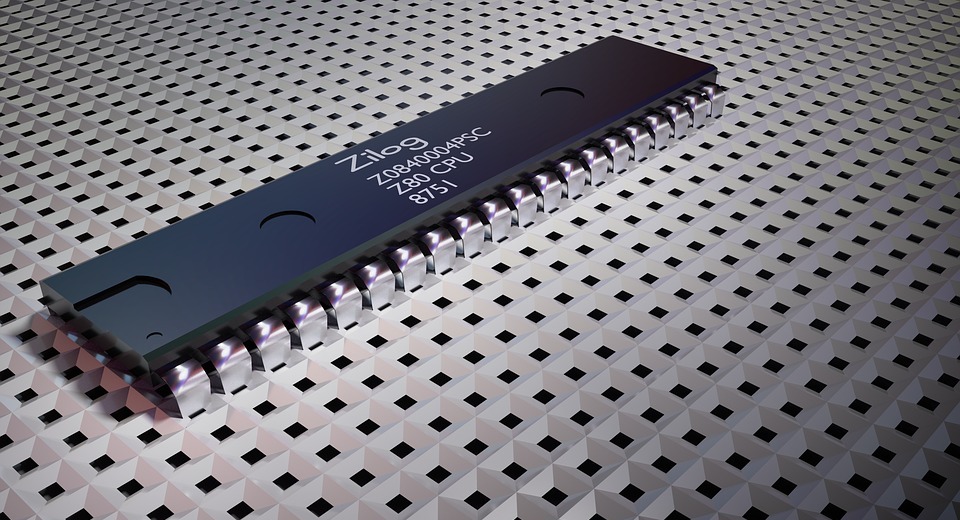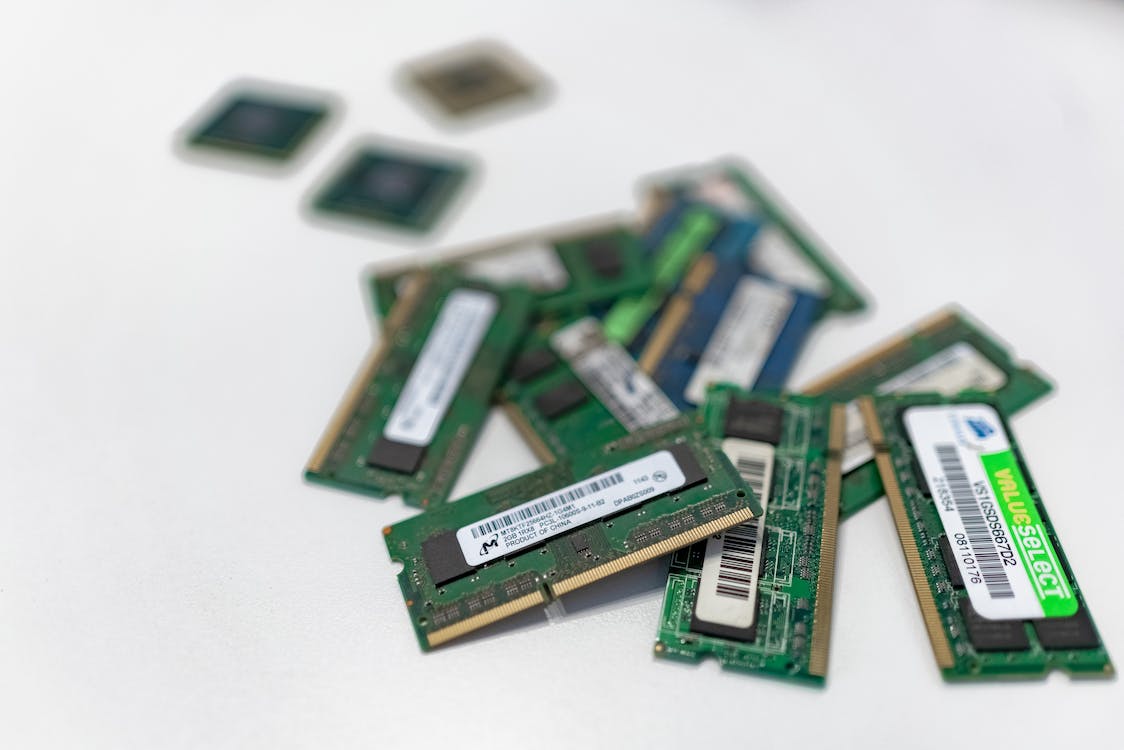Although the terms microprocessor, integrated circuits and semiconductor are often used interchangeably, they differ in many ways. Both microprocessors and integrated circuits are both small chips containing electronic circuits inside. In all modern electronics and devices, it is common to find either or both.
The introduction of integrated circuits (ICs) in modern computing and electronic design has revolutionized technology today. With the possibilities presented by these technologies engineers and designers have been able to create advanced computing devices and embedded systems. Microprocessors and integrated circuits (ICs) are crucial components in modern electronic devices that have revolutionized the way we live and work. These technologies are used in a wide range of applications, from smartphones and computers to industrial control systems and medical devices.
Microprocessors and integrated circuits have many advantages over traditional circuit designs. They are smaller, consume less power, and can perform more complex operations in less time. This has made them crucial components in the design and manufacture of modern electronic devices.
Overall, integrated circuits and microprocessors are fundamental building blocks in modern electronics, enabling the creation of powerful and efficient devices that have transformed the way we live and work. Understanding the distinctions between an integrated circuit and resistor -and-its-function>jakelectronics .com/blog/how-is-a-microprocessor-different-from-an-integrated-circuit> a microprocessor may be crucial for electrical enthusiasts and engineers with a keen interest in working with electronics.
In this article, we discuss more of them, including their use, advantages, and disadvantages.
What is an Integrated Circuit (IC)?
An integrated circuit (IC) refers to a miniature piece of a semiconductor chip, an electronic circuit that contains several millions or hundreds of millions of electronic components such as capacitors, and transistors, all built onto a single piece of semiconductor material. It is sometimes also referred to as a chip or microchip, and it is a variety of semiconductors. The integrated circuit was developed by Jack Kilby on the 12th of September, 1958.

Figure 1: An Integrated Circuit mounted on a breadboard
An integrated circuit's components are linked together to carry out a particular task, including logic processing, amplification, or filtering. ICs can be compact and easy to use, like a voltage regulator, or they can be large and sophisticated, like a microcontroller or microprocessor. An IC can perform a variety of tasks, depending on its design.
There are several types of integrated circuits (ICs) each designed for a specific task and application using different types of processes. Here are some of the most common types:
- Analog ICs: These ICs are designed to process continuous signals, such as audio or video, and are used in applications like amplifiers, filters, and voltage regulators.
- Digital ICs: These ICs are designed to process digital signals and are used in applications like logic gates, flip-flops, and microprocessors.
- Mixed-signal ICs: These ICs combine analogue and digital circuitry and are used in applications like data converters, sensors, and communication systems.
- Memory ICs: These ICs are used for data storage and retrieval, and include types such as read-only memory (ROM), random-access memory (RAM), and flash memory.

Figure 2: RAMs, examples of memory ICs
- Power Management ICs: These ICs are used to manage and control power in electronic systems, and include types such as voltage regulators, power amplifiers, and power switches.
- Microelectromechanical systems (MEMS) ICs: These ICs contain tiny mechanical devices, such as sensors or actuators, integrated with electronic circuits, and are used in applications like accelerometers, gyroscopes, and pressure sensors.
- Application-specific ICs (ASICs): These ICs are designed for a specific application or task and are customized to meet the requirements of the application.
What is Microprocessor?Bottom of Form
A microprocessor is a type of IC, usually designed to perform a specific set of operations in the data processing. It contains a central processing unit, CPU, that is capable of executing operations and instructions. The data is calculated by the ALU (Arithmetic Logic Unit). The Register, which stores and transmits data to other circuits, is the second component.

Figure 3: An example of electronics.com/blog/the-difference-between-a-microcontroller-and-a-microprocessor">a microprocessor used in computers
A microprocessor is designed to perform digital data processing tasks, such as calculations, data storage and retrieval, and control functions. Microprocessors are used in various electronic devices, such as computers, smartphones, and gaming consoles, to perform calculations, store and retrieve data, and control various functions.
Microprocessors are considered the brains of computers. It constitutes the brain and the processing power for devices that require computing capability. It is important to note that although not all integrated circuits are microprocessors, a microprocessor is an integrated circuit.
Microprocessors also exist in various categories based on the instruction set architectures (ISA) and functional differences. Below are some of the most common types of microprocessors :
- x86: This is a popular ISA used in personal computers (PCs) and servers. It is designed to work with Microsoft Windows and Intel-based hardware.
- ARM: This ISA is used in a wide range of devices, including smartphones, tablets, and embedded systems. It is known for its low power consumption and is commonly used in battery-powered devices.
- RISC-V: This is an open-source ISA that is gaining popularity due to its simple design, low power consumption, and flexibility.
- Microcontrollers (MCUs): These microprocessors are designed for embedded systems and typically have low power consumption and limited processing capabilities.
Uses of ICs and Microprocessors
Microprocessors are the fundamental building blocks of contemporary computers, smartphones, and tablets. They are in charge of carrying out intricate calculations and carrying out commands, which enables these machines to analyze enormous volumes of data and carry out a range of tasks swiftly and effectively.
Microprocessors and integrated circuits (ICs) are utilized in many systems in the automobile industry, including those that regulate the engine, the gearbox, and safety features like airbags and anti-lock brake systems (ABS). Microprocessors and integrated circuits (ICs) are employed in a variety of aircraft applications, including navigation, communication, and flight control systems.
Microprocessors and integrated circuits (ICs) are utilized in the medical industry in equipment like pacemakers, defibrillators, and insulin pumps to provide precise control and monitoring of these crucial devices.
Industrial control systems that manage the functioning of equipment and processes in the manufacturing sector employ microprocessors and integrated circuits (ICs) to increase productivity and safety.
In general, integrated circuits and microprocessors are crucial technologies that have revolutionized our daily lives. They offer precise control and processing capability, which has led to the creation of strong and effective electronic gadgets that are now an essential part of our everyday lives.
The Differences between Integrated Circuits and Microprocessors
One of the major differences between the two is in design. An integrated circuit (IC) is a miniature electronic circuit that contains multiple components, such as transistors, diodes, and resistors , on a small silicon wafer. The components are connected to form a specific electronic function, such as a logic gate or an amplifier. On the other hand, a microprocessor is a type of IC that includes a central processing unit (CPU), memory, and input/output (I/O) interfaces on a single chip. A microprocessor is essentially a computer on a chip, capable of performing arithmetic and logic operations, executing instructions stored in memory, and communicating with other devices through its I/O interfaces.
Here are some more differences:
- Functionality: A microprocessor is an entire computer on a chip that is capable of performing arithmetic and logic operations, carrying out instructions stored in memory, and interacting with other devices through its input/output (I/O) interfaces. An IC is a small electronic circuit that serves a single purpose, such as a logic gate, an amplifier, or a timer.
- Complexity: Microprocessors are intrinsically complicated due to their design as an entire computer system on a chip, whereas integrated circuits (ICs) can be simple or complex depending on their role.
- Size: Although ICs come in a variety of sizes, microprocessors, which need more components and a bigger chip area, are often smaller.
- Customizability: While microprocessors may be programmed to carry out a broad variety of functions, making them highly configurable, ICs are meant to carry out a single purpose and are not readily adaptable.
- Cost: Because ICs are simpler and require fewer components than microprocessors, they are often less costly.
- Application: While microprocessors are typically employed in computers, cell phones, and other devices requiring sophisticated computational capability, ICs are utilized in a broad range of electronic devices, from straightforward timers to complicated systems.







